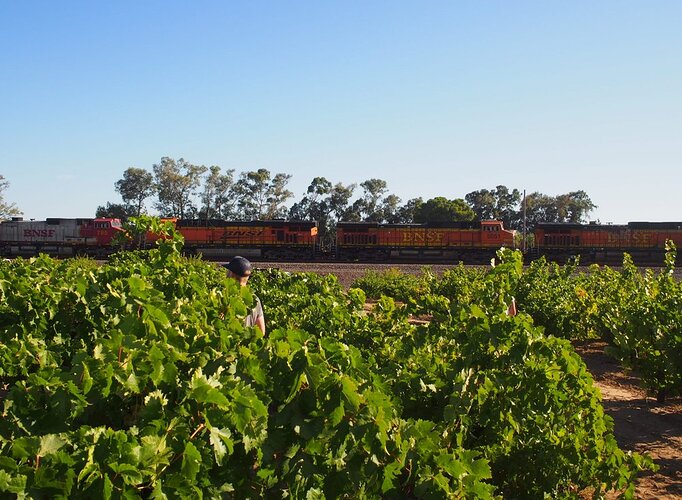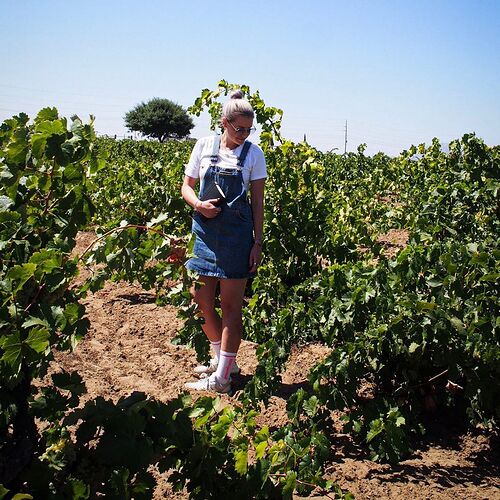In August of 2019, Christina Rasmussen began working under the guidance of esoteric winemaker Abe Schoener at Scholium Project and LA River Wine Co.
“The Alley” is a Palomino wine from the “Bridgehead Vineyard”. Ms Rasmussen acquired 1/2 a ton of Contra Costa County grapes from Megan Cline, as mentioned in her profile of grower Alan Lucchesi and the nearby “Walnut Meadows Vineyard”.
Christina Rasmussen website
“The Alley 2019”
“…The vineyard in question is the historic ‘Bridgehead Vineyard’, in Contra Costa, California, owned and farmed organically by Cline Cellars. The vineyard is predominantly planted to Zinfandel and Mataro (Mourvèdre) - the latter of which used to be a Ridge cuvée - and there is also a small amount of Palomino and Muscat found here. All the vines are own-rooted massal selection. The Palomino vines are believed to have been planted in 1935, although it is possible that they are even older. The vines are incredibly healthy and bear an astonishing amount of fruit, and the climate and health of the vineyard means it only needs to be sprayed with sulphur once a year. My wine is the only Palomino from the vineyard to have been made solo.”
Images of Rasmussen & Megan Cline in the “Bridgehead Vyd”: (Link)
"The once-rural region of Contra Costa has, in recent decades, become a hotspot for developers. With the value of land having exploded due to the area’s proximity to San Francisco (on a good day, just an hour’s commute), it is down to a small number of incredibly dedicated growers, such as the Cline family, that these vines remain in the ground today. ‘Bridgehead’ is now nestled between new builds, a road, and an old trainline.
"When emailing Megan and Charlie Tsegeletos (the now-retired winemaker of Cline) about the vineyard, Charlie said:
"‘I hope you cherish that old Palomino as much as we do. It was planted back in 1935 and it’s watched a lot of trains go by. You’ll see what I’m talking about when you see the vineyard!’
“It’s true: the vines sit quietly watching train after train trundle by, like elderly people sitting on a park bench in the afternoon sun as buses honk, kids scream, and the world continues its busy pace around them…”.
Christina Rasmussen website:
https://www.christinarasmussen.co
Christina Rasmussen’s Instagram page
https://www.instagram.com/christinarasmussen_/
Picuki mirror: Link
Linktree website:
Websites for Christina Rasmussen

